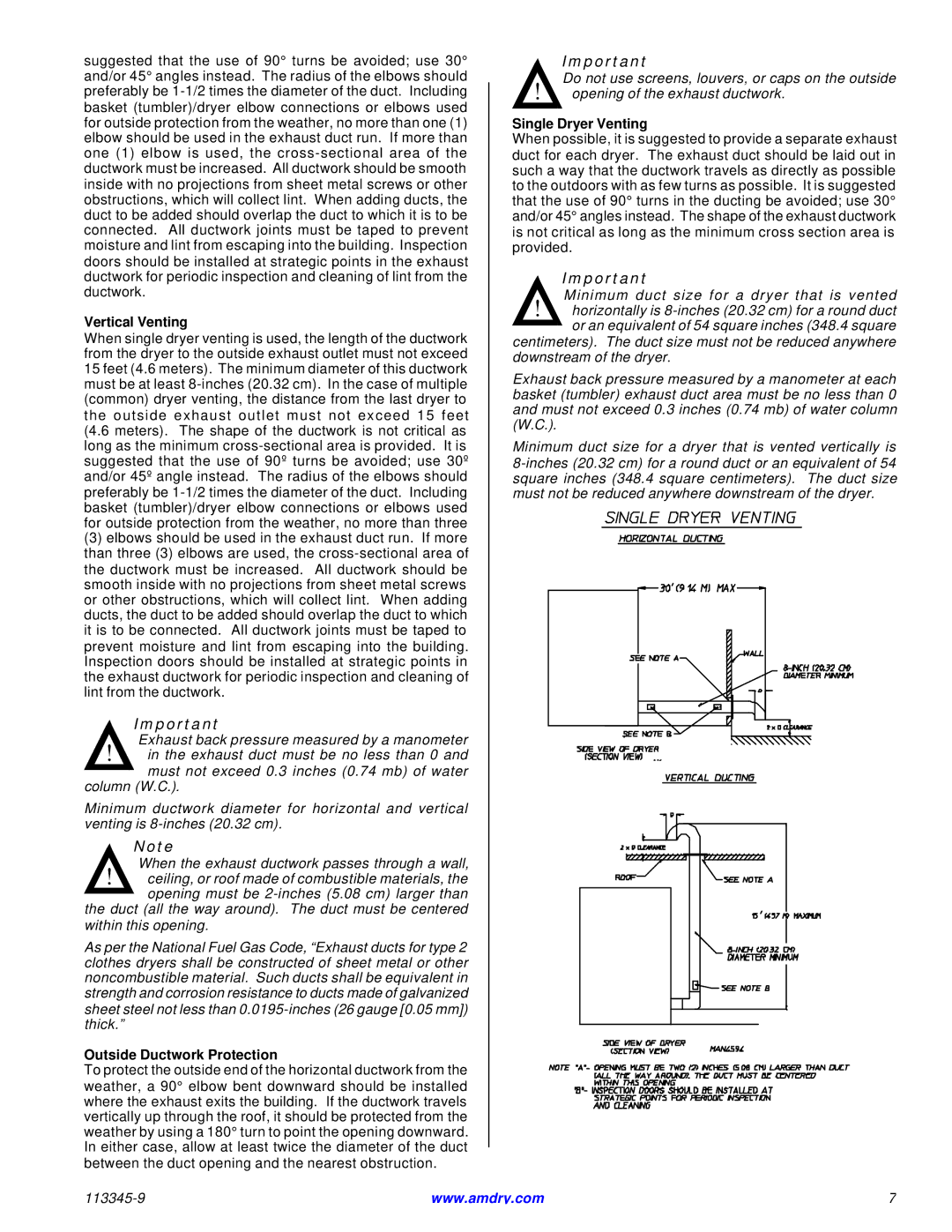
suggested that the use of 90° turns be avoided; use 30° and/or 45° angles instead. The radius of the elbows should preferably be
Vertical Venting
When single dryer venting is used, the length of the ductwork from the dryer to the outside exhaust outlet must not exceed 15 feet (4.6 meters). The minimum diameter of this ductwork must be at least
(3)elbows should be used in the exhaust duct run. If more than three (3) elbows are used, the
Important
Exhaust back pressure measured by a manometer
!in the exhaust duct must be no less than 0 and
![]() must not exceed 0.3 inches (0.74 mb) of water column (W.C.).
must not exceed 0.3 inches (0.74 mb) of water column (W.C.).
Minimum ductwork diameter for horizontal and vertical venting is
Note
When the exhaust ductwork passes through a wall,
!ceiling, or roof made of combustible materials, the ![]() opening must be
opening must be
As per the National Fuel Gas Code, “Exhaust ducts for type 2 clothes dryers shall be constructed of sheet metal or other noncombustible material. Such ducts shall be equivalent in strength and corrosion resistance to ducts made of galvanized sheet steel not less than
Outside Ductwork Protection
To protect the outside end of the horizontal ductwork from the weather, a 90° elbow bent downward should be installed where the exhaust exits the building. If the ductwork travels vertically up through the roof, it should be protected from the weather by using a 180° turn to point the opening downward. In either case, allow at least twice the diameter of the duct between the duct opening and the nearest obstruction.
Important
Do not use screens, louvers, or caps on the outside
!opening of the exhaust ductwork.
Single Dryer Venting
When possible, it is suggested to provide a separate exhaust duct for each dryer. The exhaust duct should be laid out in such a way that the ductwork travels as directly as possible to the outdoors with as few turns as possible. It is suggested that the use of 90° turns in the ducting be avoided; use 30° and/or 45° angles instead. The shape of the exhaust ductwork is not critical as long as the minimum cross section area is provided.
Important
Minimum duct size for a dryer that is vented
!horizontally is
![]() or an equivalent of 54 square inches (348.4 square centimeters). The duct size must not be reduced anywhere downstream of the dryer.
or an equivalent of 54 square inches (348.4 square centimeters). The duct size must not be reduced anywhere downstream of the dryer.
Exhaust back pressure measured by a manometer at each basket (tumbler) exhaust duct area must be no less than 0 and must not exceed 0.3 inches (0.74 mb) of water column (W.C.).
Minimum duct size for a dryer that is vented vertically is
www.amdry.com | 7 |
